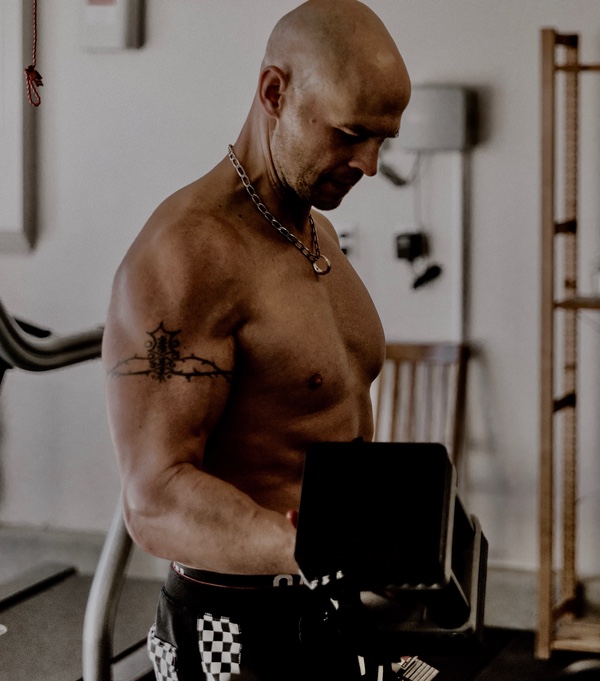Today’s topic is going to be a little more serious ladies and gentleman, because today we are going to talk about cheating! You cheat on your diet, you get fat. You cheat on your spouse, they leave you. You cheat at school, or work, you get fired / expelled. Cheat on taxes and oh no… Cheat in the weight room and guess what you get? Possibly more muscle. Wait what?! Hold up, did I just say you get more muscle? Yes, it’s possible to do this, it’s called cheat sets, one that I forgot to mention earlier but just popped up in my head today for some reason. You can use cheat sets to gain more muscle. Now cheat sets are not good for every exercise obviously. You can’t really do them for exercises like barbell bench press, but they are good for other things like bicep curls, shoulder presses, rows, one-arm, one-leg exercises, ect… The way it works, example, bicep curls: curl the weight with perfect form until you can’t. Once you fail bend at the knees then extend, at the same time curl up (while not hyperextending your back), then lower the weight super slowly focusing on the negative portion of the lift. This allows you to do an extra rep beyond your capability and causes the muscle to have to adapt by growing (as long as nutrition is intact). Another example would be single leg, leg extensions. Using one leg to extend until you fail, then use the other leg to assist you through a couple of extra reps. Okay so the weight room is the one place in this world where cheating and failure are actually welcomed. 😉
Next up on our list of goodies is rest pause sets. Rest pause sets allow you to do more volume with heavier weight than you normally would. Example bench press: Let’s say you do 250 for 3 sets of 8 reps normally. That’s 6000 total pounds lifted. Instead of doing 250, do 275. Yes you can do more weight, you just won’t get as many reps. What you do is take 275 to failure. Let’s say that you will only get 5 reps . Do 5, rest 10 seconds, do two more, rest 5 to 10 seconds, do your last rep. Then take a full two to three minute rest before starting your next set. When you finish guess what? You lifted an additional six-hundred pounds! Good job! 🙂
Next up, set range training. Did I ever mention to you that you need to write down or record your workouts? Well now I have, and yes you do! It’s very important – how do you know what you lifted yesterday, last week, last month? How do you know if you’re progressing or not? Are you still lifting the same amount that you lifted last year? If you don’t write it down how do you know? I see trainers and trainees make this mistake all the time, then wonder why they’re still lifting the same amount and haven’t changed. It’s called progression and without it you just have insanity. Okay, I just went off on a little ramble about writing things down. 🙂 Set range works like this: Let’s say you can deadlift 150 pounds for 8 reps x 3 sets. Write it down. Next week shoot for 150 pounds x 10 reps on the first set, 8 reps on the second set, and 8 reps on the third set. The following week shoot for 10, 10, 8. Then 10, 10, 10. Then move up to 155 pounds. And so on and so on. It’s important with set range training to take your time and not move up too quickly. Otherwise you’ll hit a plateau super fast. Give the workout some time to work by only moving up small increments, a rep here, a rep there, five pounds here, five pounds there. Once your body adjusts to this over time you’ll see that you move up a lot in the long run.
Number four on today’s list is Hyperbaric training, which basically means training with an oxygen mask, high altitude, wiring in oxygen-depleted state. In a nutshell doing this increases your red blood cell count which ends up causing your body to increase its own oxygen supply. With increased oxygen in your system your body will have an increase in performance, and thus greater gains.
Next on this list is occlusion training. This is still a relatively new animal in the fitness world. I know this might sound crazy but you can build bigger muscles by occluding, or cutting off, blood supply to your veins (not to be confused with the arteries). This works because blood pools and expands the muscle, causing an increase in size and strength. Now before you go tourniquet-crazy, here is my disclaimer and what you need to know: This type of training is relatively new. I personally have not tried it (being that I have a heart condition from birth), otherwise, I know me, I totally would try it. However, there is still more to learn, science hasn’t totally unraveled it all. My eye is on it. What I do know is that a couple of studies have shown it to be rather promising. The benefit of it is that you don’t have to lift more than 20 to 30% of your 1 rep max, which is very cool. Especially for lazy people hahaha LOL. Basically, how it works is you take a wrap and place it above your muscle at the most narrow part. Occlude or place the wrap on at 70% tightness on the legs, 50 to 60% tightness for the arms. You want to occlude the veins, not the arteries. Next, pick a weight that is only 20 and not more than 40% of your 1 rep max. Do 4 sets of 30, 15, 15, and 15 for a couple of weeks and watch your arms and legs get stronger and grow! The claim by the studies is that it is safe and effective. This could be amazing for post-surgery patients, elderly, young, or just plain lazy folks. Haha LOL. It is not for diabetics, people with high blood pressure, pregnant, heart condition problems, or heart disease. Check with a doctor before you even consider thinking about trying it. 🙂
Last but not least is good old “pump – stretch – flex”. Haha sounds like something I can imagine Arnold saying back in the day. Anyway, this is a good one. I know personally. I have hooked up many clients to bio-electrical impedance, and have seen personally how well this works for building muscle. How does it work? You do a set, say bench press, then immediately stretch the muscle, followed by an all-out hard as you can flex of the muscle. It’s as simple as that. If you don’t know how to stretch or flex, which is a topic for another day, keep reading my blogs.
This concludes set types. I would just like to say that this is not all of the sets that are out there. There are others I’m sure, and new things are being developed as I’m speaking. The one thing that most of these sets have in common is it they help push you past your limit. This is a good thing if you want to achieve that lean sexy body! 😉
Thanks for reading, and keep following me – my hope is that this inspires you to exercise and get fit. Thanks, Donovan.



